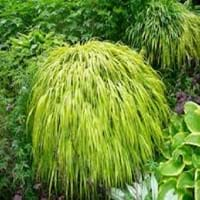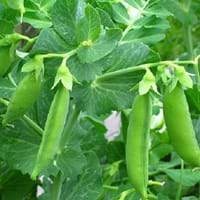Life Span
Perennial
Annual
Origin
Japan
Mediterranean
Types
Not Available
Sugar Bon pea, Super Sugar Snap bean
Number of Varieties
Not Available
Habitat
meadows, Riverbanks, Wet Woods
Fields, Loamy soils
USDA Hardiness Zone
5-9
Not Available
Sunset Zone
1a, 1b, 2a, 2b, 3a, 3b, 4, 5, 6, 7, 8, 9, 10, 11, 12, 13, 14, 15, 16, 17, 18, 19, 20, 21, 22, 23, 24
A1, A2, A3, H1, H2, 1a, 1b, 2a, 2b, 3a, 3b, 4, 5, 6, 7, 8, 9, 10, 11, 12, 13, 14, 15, 16, 17, 18, 19, 20, 21, 22, 23, 24
Habit
Clump-Forming
Vining/Climbing
Minimum Width
Not Available
Flower Color
Blue Violet
White, Pink, Lavender
Flower Color Modifier
Bicolor
Bicolor
Leaf Color in Spring
Yellow, Green, Light Green
Green, Sea Green, Gray Green
Leaf Color in Summer
Light Green
Not Available
Leaf Color in Fall
Orange, Yellow green, Orange Red
Green, Blue Green, Gray Green
Leaf Color in Winter
Green, Dark Green, Not Available
Green, Blue Green, Gray Green
Leaf Shape
Oblovate
Egg-shaped
Plant Season
Spring, Summer, Fall
Spring, Fall, Winter
Sunlight
Full Sun, Partial Sun, Partial shade
Full Sun, Partial Sun
Type of Soil
Loam
Clay, Loam, Sand
The pH of Soil
Acidic, Neutral
Neutral
Soil Drainage
Well drained
Well drained
Bloom Time
Late Summer, Early Fall, Fall
Early Spring, Spring, Late Spring, Fall, Late Fall, Early Winter, Winter, Late Winter
Tolerances
Dry soil, Shallow soil
Dry Conditions, Salt and Soil Compaction, Variety of soil types
Where to Plant?
Ground
Ground
How to Plant?
From Rhizomes
Seedlings
Plant Maintenance
Medium
Medium
Watering Requirements
Keep ground moist
Allow to dry out slightly between watering, Needs watering once a week
In Summer
Lots of watering
Consistently
In Spring
Consistently
Adequately
In Winter
Adequately
Less Watering
Soil pH
Acidic, Neutral
Slightly Acidic
Soil Type
Loam
Clay, Loam, Sand
Soil Drainage Capacity
Well drained
Well drained
Sun Exposure
Full Sun, Partial Sun, Partial shade
Full Sun, Partial Sun
Pruning
Prune grass to maintain level, Prune if you want to improve plant shape
No pruning needed, Prune in flowering season, Remove damaged leaves
Fertilizers
organic fertlizers
Compost, fertilize in winter
Pests and Diseases
Not Available
Downy mildew, Gall Insects, Leaf curl, Peach Leaf Curl, Powdery mildew, Root rot
Plant Tolerance
Shade areas, Shallow soil, Wet Site
Light Frost
Flowers
Insignificant
Showy
Flower Petal Number
Single
Single
Foliage Texture
Medium
Medium
Foliage Sheen
Matte
Matte
Attracts
Ants, Beetles, Caterpillar
Not Available
Allergy
allergic conjunctivitis, Asthma, Rash
Diarrhea, Intestinal gas
Aesthetic Uses
Beautification, Ground Cover
As decorated salad
Beauty Benefits
Not Available
Remove blemishes, Skin Problems
Environmental Uses
Provides ground cover, Shadow Tree
Fixes Nitrogen, Food for animals, Very little waste
Medicinal Uses
Acne, Aging, Laxative
No Medicinal Use
Part of Plant Used
Leaves
Leaves, Seeds
Other Uses
Can be made into a herbal tea, Showy Purposes
Cosmetics, Making Shampoo, Used as a nutritious food item, Used As Food
Used As Indoor Plant
Sometimes
No
Used As Outdoor Plant
Yes
Yes
Garden Design
Container, Edging, Mixed Border, Rock Garden / Wall, Water Gardens
Container, Edible, Herb, Vegetable, Vine
Botanical Name
HAKONECHLOA macra 'Aureola'
PISUM sativum
Common Name
Golden Japanese Forest Grass, Hakone Grass
Garden Pea
In Hindi
जापानी वन घास
चीनी मटर
In German
Japanische gras
Kefe
In French
Forêt herbe japonaise
Erbse
In Spanish
forestales hierba japonesa
guisante
In Greek
Ιαπωνικά γρασίδι δάσος
μπιζέλι
In Portuguese
floresta grama japonês
ervilha
In Polish
Japoński las lato
groch
In Latin
Forest gramina Italica
pea
Phylum
Angiosperms
Magnoliophyta
Class
Monocots
Magnoliopsida
Clade
Angiosperms
Dicotyledonous
Tribe
Not Available
Not Available
Subfamily
Arundinariinae
Not Available
Number of Species
Not Available
Importance of Japanese Forest Grass and Sugar Snap Pea
Want to have the most appropriate plant for your garden? You might want to know the importance of Japanese Forest Grass and Sugar Snap Pea. Basically, these two plants vary in many aspects. Compare Japanese Forest Grass and Sugar Snap Pea as they differ in many characteristics such as their life, care, benefits, facts, etc. Every gardener must at least have the slightest clue about the plants he wants to plant in his garden. Compare their benefits, which differ in many ways like facts and uses. The medicinal use of Japanese Forest Grass is Acne, Aging and Laxative whereas of Sugar Snap Pea is No Medicinal Use. Japanese Forest Grass has beauty benefits as follows: Not Available while Sugar Snap Pea has beauty benefits as follows: Not Available.
Compare Facts of Japanese Forest Grass vs Sugar Snap Pea
How to choose the best garden plant for your garden depending upon its facts? Here garden plant comparison will help you to solve this query. Compare the facts of Japanese Forest Grass vs Sugar Snap Pea and know which one to choose. As garden plants have benefits and other uses, allergy is also a major drawback of plants for some people. Allergic reactions of Japanese Forest Grass are allergic conjunctivitis, Asthma and Rash whereas of Sugar Snap Pea have Diarrhea and Intestinal gas respectively. Having a fruit bearing plant in your garden can be a plus point of your garden. Japanese Forest Grass has no showy fruits and Sugar Snap Pea has showy fruits. Also Japanese Forest Grass is not flowering and Sugar Snap Pea is not flowering . You can compare Japanese Forest Grass and Sugar Snap Pea facts and facts of other plants too.





